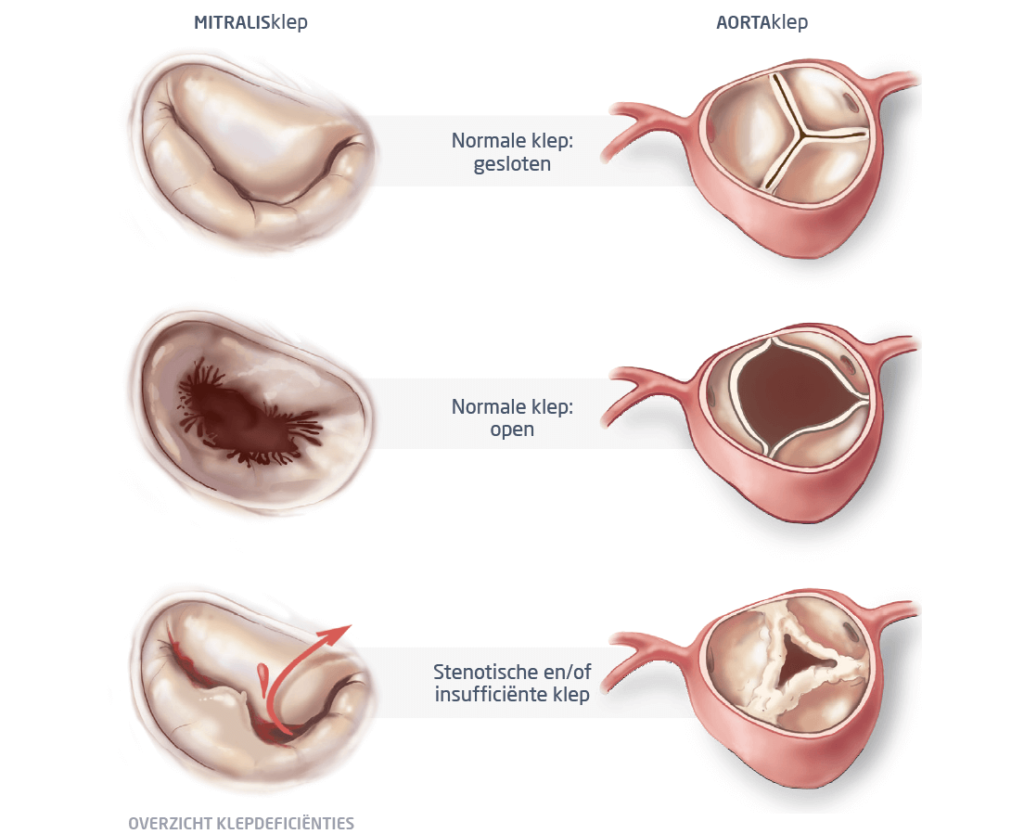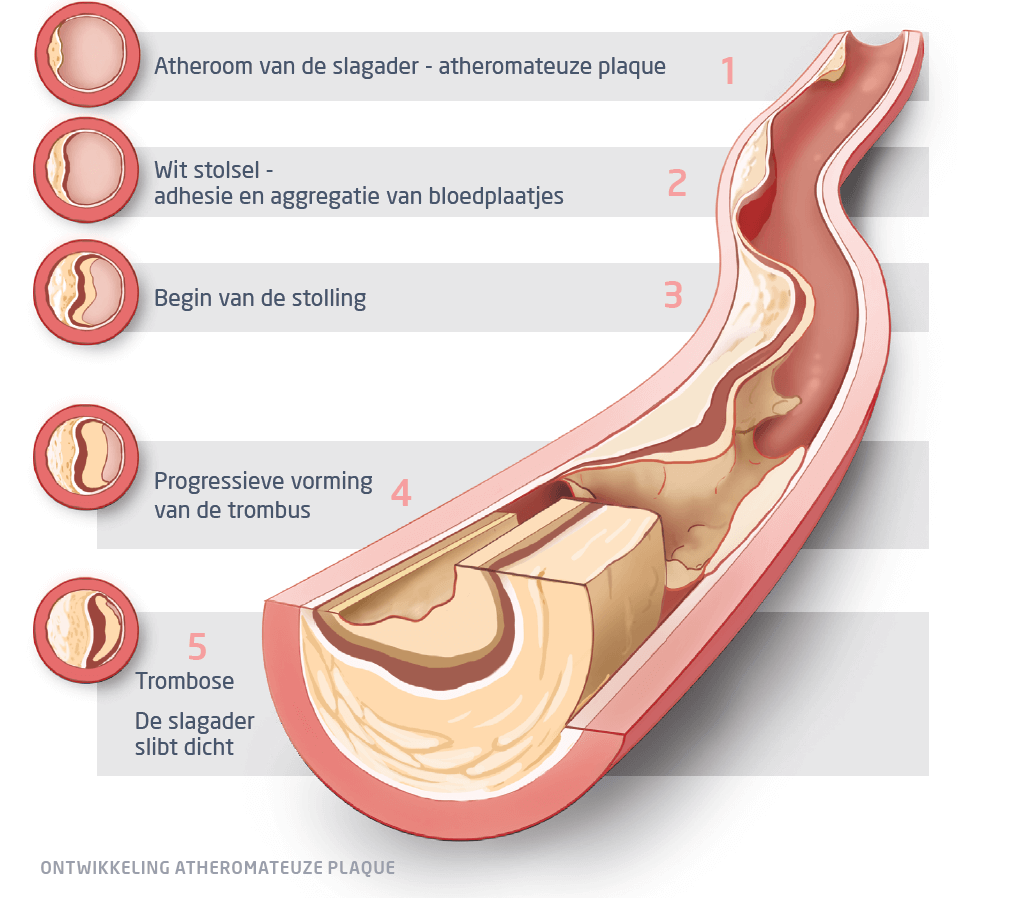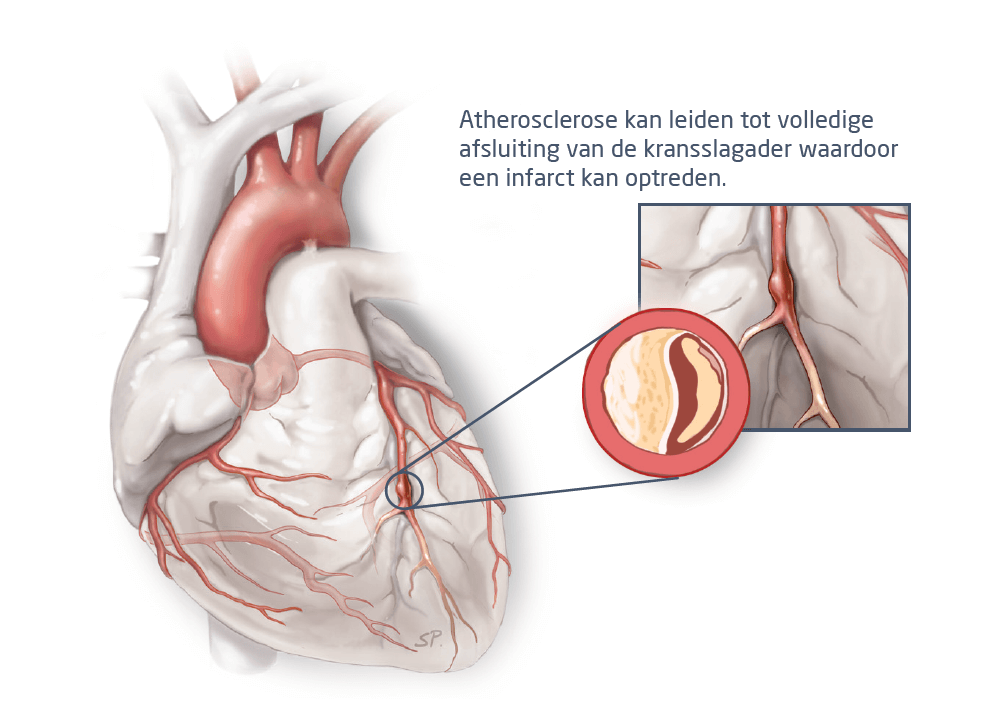There are several disorders that can interfere with the normal functioning of the heart. Three types of disorders can be distinguished.
- congenital defects
- heart valve abnormalities
- narrowing of the coronary arteries
Congenital anomalies
The narrowing of the coronary arteries and poorly functioning heart valves are diseases which are not congenital but acquired. Thus, they have developed over the course of years.
However, it is also possible that you are born with a heart defect. In that case we speak of congenital defects. No pediatric cardiac surgery is performed in this hospital. Only those congenital disorders which manifest themselves in adulthood are treated in our department.
Heart valve defects
Healthy heart valves close perfectly and open fully.
Problems with heart valves can occur because they no longer close or open completely:
- a narrowing of the opening due to calcification of the valve leaflets (= valve stenosis)
- a deformity of the valve leaflets
- damage, loosening or stretching of the valve leaflets or the valve “ring” (= valve insufficiency)
In all these cases, the heart has a harder time than normal. Most valve abnormalities occur in the mitral and aortic valves. Over time, this can damage the heart. The heart then has to work harder to pump (= heart failure). This may require valve surgery.
The most common complaints associated with valve disease are:
- shortness of breath
- swollen feet (= edema)
- chest pain
- irregular heartbeat
- fatigue
- dizziness on exertion
- syncope
- shortness of breath and fluid on the lungs

Narrowing of the coronary arteries
Like all muscles, the heart needs oxygen. It gets this from the coronary arteries. As long as these arteries have nice smooth walls inside, there is nothing wrong with them. Even if you exert yourself during work or sport and your heart needs extra oxygen, the coronary arteries can still deliver enough blood and oxygen to the heart.
Problems arise when the coronary arteries become clogged on the inside (= atherosclerosis). This clogging occurs because fat accumulates against the wall of the blood vessels. This damages the inner layer of the blood vessel, which forms a thick plaque and narrows the coronary artery. Along a plaque, the blood cannot flow as well and thus the heart receives less oxygen than it needs.

This may be manifested by:
- pressing pain behind the sternum
- pain in the left arm, jaws, possibly back and shoulder blades
- sometimes pain in the right arm
- stomach complaints
- shortness of breath
Common treatments are:
- medication
- healthy lifestyle (diet, stopping smoking, sufficient exercise)
- balloon dilatation: the coronary artery is blown open so that the narrowing disappears
- placement of a stent, which stretches the coronary artery open and prevents the blood vessel from clogging up again
- coronary bypass: this is an operation in which the narrowing in the coronary artery is bypassed with a blood vessel from elsewhere in the body, thus bridging the circulation over the narrowing.
If the atherosclerosis is not treated, it eventually leads to a complete occlusion of the coronary artery causing an infarction.

